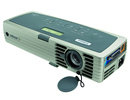'ZDNET Recommends': What exactly does it mean?
ZDNET's recommendations are based on many hours of testing, research, and comparison shopping. We gather data from the best available sources, including vendor and retailer listings as well as other relevant and independent reviews sites. And we pore over customer reviews to find out what matters to real people who already own and use the products and services we’re assessing.
When you click through from our site to a retailer and buy a product or service, we may earn affiliate commissions. This helps support our work, but does not affect what we cover or how, and it does not affect the price you pay. Neither ZDNET nor the author are compensated for these independent reviews. Indeed, we follow strict guidelines that ensure our editorial content is never influenced by advertisers.
ZDNET's editorial team writes on behalf of you, our reader. Our goal is to deliver the most accurate information and the most knowledgeable advice possible in order to help you make smarter buying decisions on tech gear and a wide array of products and services. Our editors thoroughly review and fact-check every article to ensure that our content meets the highest standards. If we have made an error or published misleading information, we will correct or clarify the article. If you see inaccuracies in our content, please report the mistake via this form.
InFocus LP120


InFocus LP120
pros and cons
- Highly portable
- low noise
- high contrast.
- Low brightness
- unimpressive colour reproduction
- fiddly focus ring.
It's not often that something impresses us by going unnoticed in the ZDNet office. Yet most people walking by the labs assumed the image on our projection screen was being rear-projected, or magically appearing out of thin air -- until the entirely un-projector-sized LP120 was pointed out to them. They hadn't seen it until that point.
InFocus has produced the smallest video projector on the market today, and has done so without making too many compromises. Measuring 24.5cm wide by 9.3cm deep by 5.0cm high and weighing a fraction under a kilogram, it's a superb addition to the mobile professional's travel kit.
The LP120 is an XGA (1024 x 768) resolution projector, producing 1100 ANSI Lumens of brightness at a contrast ratio of 2000:1 full on/off. These specifications aren't amazing for a presentation projector -- you can get far brighter units than this if that's what you need. However, the fact that InFocus has managed to get this performance into such a small package is still to be admired. You have a throw range of 1.5m to 5m, and even at the end of this range the image brightness is still acceptable when using a projection screen. Direct light, either from the sun or room lighting, will wash the image out though; you're advised to dim the lights if possible when projecting over larger distances.
This certainly isn't a projector for video. Despite the fact that the small form factor may appeal to some people who want to use a projector at home, the colour rendition and aspect ratio make the LP120 less than ideal for watching movies or TV.
The compact nature of the LP120 has meant that InFocus has had to design a new bulb module incorporating a cooling system around the glass capsule, the whole assembly resembling something from a 1950s Sci-Fi movie. The entire module has to be replaced when the bulb fails, and it takes a bit of practice to do this smoothly.
Compromises do have to be made to get a projector this small. There are few extra features in the LP120 other than those required to give a presentation -- you'll look in vain for a multiple inputs, complicated remote controls and quality sound reproduction. You get two inputs: an extended DVI port and an S-Video input.
There's also a 3.5mm jack socket for audio input, although the single 1W speaker in the LP120 really isn't up to anything more than the odd sound effect. The main input carries a USB connection in addition to the video inputs, and the standard cable supplied connects to a VGA connector and a USB port. The USB connection allows you to use the projector's remote control with the host PC.
Top ZDNET Reviews
The remote control is very simple, offering only the ability to control a presentation package via the USB connection, a laser pointer and one other, user-selectable function. In contrast to most InFocus projectors, you can't configure the LP120 from the remote -- for that, you'll have to use the control panel on the top of the projector. In addition to the buttons on the top panel, there's a two-line LCD panel that provides status messages. This is far preferable to the LED indicators normally used on projectors, although you still use the on-screen menu for configuring the projector.
The manual focus and zoom controls on the lens are necessarily quite small. They don't feel as solid as those on larger projectors, but since they don't protrude beyond the body of the projector, there's little risk of damage. However, this also means that to focus the LP120 you have to rotate the focus ring by pressing on the face of it -- if you're not careful this could lead to finger marks on the lens. The tilt foot that drops out of the bottom of the LP120 is flimsy, and could be snapped off if not retracted properly before you put the projector away.
With a list price of £1,999 (ex. VAT), the LP120 isn't expensive by today's standards, although you can certainly buy cheaper projectors than this. If you don't need the ultimate in portability, then other products may fit your needs better, either through higher brightness, better video rendition or lower cost. However, if your work involves lots of travelling -- especially by public transport -- and you need to take a projector with you, the LP120 is exactly what you need.